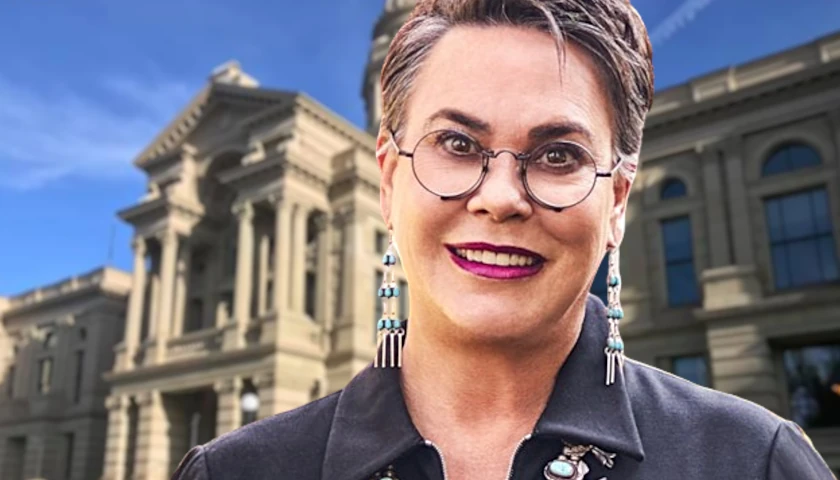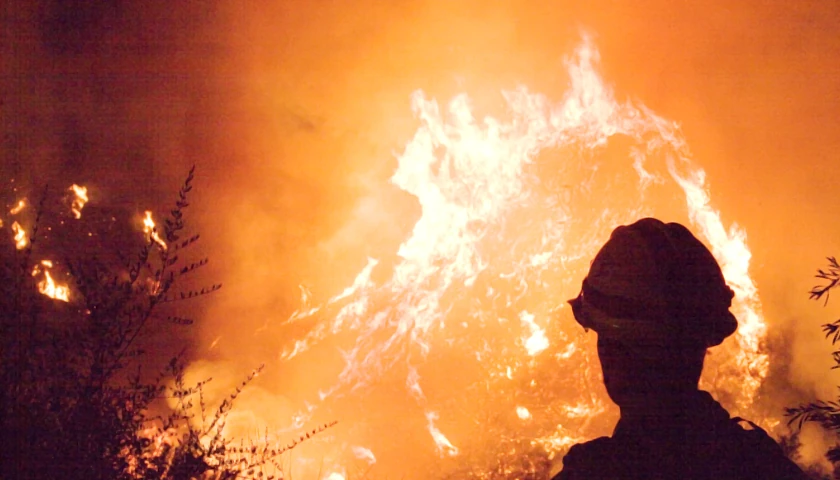by Kevin Killough
The Bureau of Land Management (BLM) has been chipping away at the oil, gas and coal industries ever since President Joe Biden took office. Wyoming is an energy state that produces half the nation’s coal, as well as part of its oil and gas output. Since the federal government owns nearly half the state’s land, virtually all oil, gas and coal operations in the Cowboy State are heavily impacted by every rule the BLM throws at fossil fuels.
Although the Biden administration is waging war on fossil fuels, Wyoming is fighting back. The state, along with Utah, filed a lawsuit against the agency last Tuesday over its restoration lease program, and Rep. Harriett Hageman, R-Wyo., is rolling out legislation to fight back against the BLM’s proposed ban on federal coal leases.
Coal fight
Wyoming produces about 50 percent of all thermal coal burned in the U.S. Thermal coal is used in electricity generation, as opposed to metallurgical coal, which is used in heavy industry. The state’s coal production has been in decline since 2008, when it produced over 466 million tons. In 2023, it was down to just over 230 million tons.
That’s partly due to the nation’s transition to natural gas-fired electricity generation. It is also due to regulations going back to the Obama administration, and the efforts of well-funded efforts by NGOs like the Sierra Club, which received $500 million for its Beyond Coal campaign from billionaire Michael Bloomberg.
In May, the BLM’s Buffalo Field Office proposed an amendment that would ban future coal leasing in the state’s main coal producing area.
Rep. Harriet Hageman, R-Wyo., told Just the News that with the rule, the BLM is violating federal law and exceeding its authority with the rule. “The BLM does not have the unilateral authority to outlaw coal mining in the United States,” Hageman said.
She introduced legislation to block the rule from being implemented, and she’ll be introducing an appropriations bill as well that will prohibit the BLM from using any funding to implement the rule.
Last week, Hageman toured the Belle Ayr Mine near Gillette, Wyoming, with House Natural Resources Committee staff and other members of Congress. They also toured a coal-fired power plant near the mine. That was followed by a roundtable, which included employees of Wyoming’s coal mines. Hageman said that she spoke to third-generation mine workers.
“These are family long term, high quality, high paying jobs that family members follow each other into, and now you’ve got a federal government from Washington D.C. saying we’re going to shut you down,” Hageman said.
While Wyoming is losing jobs, Hageman said, the country is descending into energy poverty, which will bring the entire economy down with it. “What I’m really trying to highlight is the fact that affordable, reliable energy is desperately needed. And the idea that we’re going to get rid of one of the most important energy resources that we have is just absurd,” Hageman said.
The long-term and seasonal assessments of the North American Electric Reliability Corporation, which oversees reliability of the electricity grid in Canada and the United States, regularly finds increasing risks of blackouts during periods of high demand across large portions of the country. One of the primary causes, NERC finds, is the rapid retirement of baseload power sources and an overreliance on intermittent wind and solar.
The problem is being compounded by increased loads on the grid. This includes electric vehicles, but also data centers, with some facilities being rejected over power demand concerns.
Hageman said she often points to what happened in South Africa, which pledged to meet emission reductions. The country was highly successful in meeting reduction targets. Unfortunately, it also meant widespread and frequent blackouts lasting hours per day to the detriment of the country’s economy. Some media outlets, such as Bloomberg — privately owned by Michael Bloomberg — appear to praise the country for achieving emission reductions through blackouts.
“Who in the world believes that we’re going to be able to continue to live in a first-world country and have the prosperity that we have experienced and enjoyed over the last 70 years, without the use of coal and oil and gas?” Hageman said.
The South African government last Thursday granted the country’s state-owned utility permission to keep five coal-fired power plants operational for another five years, Oilprice.com reported.
Local governments in Wyoming are also fighting back against the BLM’s war on coal. On Monday, members of the Campbell, Converse and Johnson County commissions, where the major mines are located, sent a 954-page letter to BLM Director Tracey Stone-Manning protesting the new rule.
The letter explains that the counties’ economic viability is dependent on the ability to produce, market and deliver coal to consumers across the county, and for that industry to be viable, the federal coal leasing program is essential.
“It is baffling that a federal agency would have such disregard for our local communities, state, industries and workforce that invoke tireless effort into ensuring that the lights stay on across this country to provide reliable, affordable energy — not to mention — investment of billions of dollars to responsibly address advanced technology to curtail carbon dioxide emissions — all for not, [sic]” the letter states.
Hellhole
Even Wyoming’s Gov. Mark Gordon — who is an outspoken proponent of decarbonizing the West — issued a rebuke against the agency when the rule was announced. Gordon said in a statement on the BLM’s proposed coal ban, that it would lead to blackouts and energy poverty.
“At the highest levels the Biden Administration – including Interior Secretary Haaland – have shown a complete disregard for blue-collar workers and their families; local communities and neighborhood businesses; the aspirations of local governments and economic development entities; university scientists and others diligently working on viable solutions to climate concerns; as well as the livelihoods of power plant employees and anyone who relies on dependable, affordable, and attainable electricity,” Gordon said in the statement.
Gordon has also criticized the BLM’s restoration lease program, which was finalized in April. The rule allows public land to be leased just like oil and gas, except the allowed uses would prevent resource development. Critics argue the rule allows environmental groups to make a non-use a type of use of public land.
Wyoming and Utah Tuesday filed a lawsuit against the Department of the Interior and the BLM, arguing the rule represents a “sea change in how the agency will carry out its mission moving forward.” The rule, according to the lawsuit, creates land-management tools not authorized by federal law.
Along with Utah and Wyoming, the lawsuit notes, local governments, industry groups, nonprofits, and members of Congress urged the BLM to consider what federal law may require before pushing the rule through. The BLM, according to the lawsuit, brushed these objections aside and unilaterally finalized the rule.
Wyoming is not alone in filing lawsuits at the Biden administration’s rulemaking. Lawsuits have been filed against the pause on liquified natural gas export permits, the electric vehicle mandate, and the Power Plant Rule, which Wyoming joined.
While those challenges go through the courts, Wyoming’s fossil fuel producers try to weather the storm. The BLM scheduled an oil and gas lease auction for June 27. The auction is for 18 oil and gas parcels totalling just over 10,000 acres, down from 1,600 acres in March. It will be the smallest action the state has seen since 2009.
“Our food supply, our affordable housing, our ability to educate our children — everything is based upon the foundation of the commercial production of affordable energy. And here we have a government that has gone to war with the American people and is bound and determined to turn us into a Third World hellhole,” Hageman said.
– – –
Kevin Killough is a reporter for Just the News.
Photo “Rep. Harriet Hageman” by Harriet Hageman. Background Photo “Wyoming State Capitol Building” by Wyoming Capitol Square.





